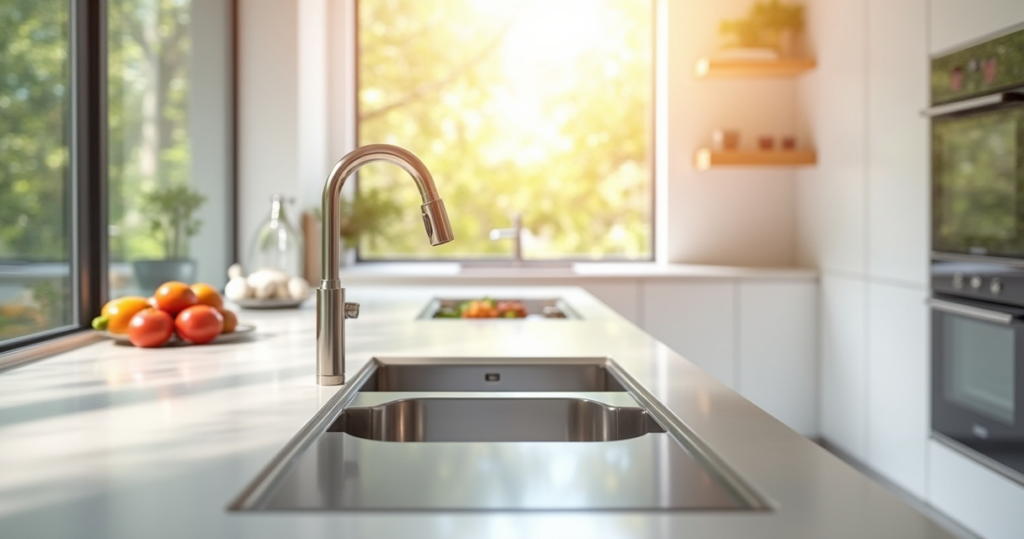Can we talk for a moment about why so many kitchens feel… restless? People seem to believe that adding more is the path to a better space. More gadgets, more features, more materials all competing for attention. This is a deeply Western idea. But what I learned in the temples and traditional homes of Kyoto is that a space finds its true purpose not in what you add, but in what you thoughtfully choose to keep. The kitchen sink, in particular, is often treated as a noisy workhorse, a place of chaotic utility. It is misunderstood.
What if we saw it instead as the still point in the heart of the home? A well of quiet potential. For centuries, the Japanese kitchen has been a place of mindful ritual, and the area for washing is central to this. This is not about having less; it is about finding meaning in simplicity. These aren’t just features to be checked off a list. They are philosophical choices that shape the energy of your space. What I want to share with you is not a shopping guide, but a way of seeing. A way to choose a sink that brings a sense of calm and harmony that will ripple through your entire home for years to come.
Strategic Planning for Your Perfect Sink (Part 1)
Before one selects the vessel, one must understand the purpose it will serve. In our haste, we often look at pictures and choose a form without considering the flow of energy and movement in our own space. This initial phase is not about sinks; it is about observing ourselves. We must plan with intention, creating a foundation of calm upon which everything else can be built.
1. Assess Your Kitchen Workflow to Optimize Sink Placement
The movement in a kitchen should feel like a quiet, practiced dance, not a series of frantic collisions. Observe your own motions as you prepare a simple meal. Where do you move from the refrigerator to the counter? From the cutting board to the stove? The sink is not an island; it is a vital point along this path, a place to pause, to cleanse, to prepare. Its placement should feel natural and intuitive, reducing your steps and clearing your mind of unnecessary clutter.
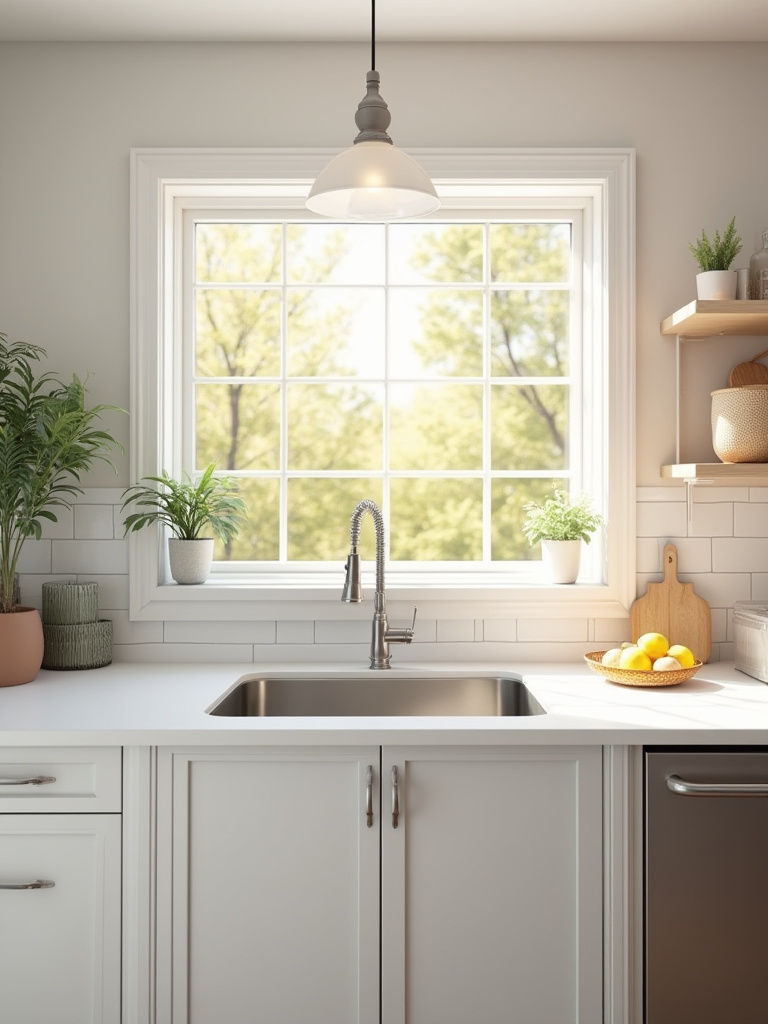
An improperly placed sink creates friction you may not even consciously notice—a constant low-level irritation. By mapping your movements, you create a space that supports you, that flows with you. This isn’t about cold efficiency or shaving seconds off a task. It is about removing resistance, allowing for a more meditative state as you nourish yourself and your family.
This process of observation teaches us what our space truly needs, rather than what trends tell us we should want.
2. Evaluate Cabinet Dimensions for Sink Compatibility
The cabinet that holds your sink is more than a box. It is the vessel, the foundation that supports this essential function. Before you can choose the sink, you must understand and respect the space it will inhabit. To measure its dimensions is an act of acknowledging its boundaries and its potential. Rushing this step is a sign of impatience and leads to discord—a sink that does not fit, a cabinet that must be forced into service.
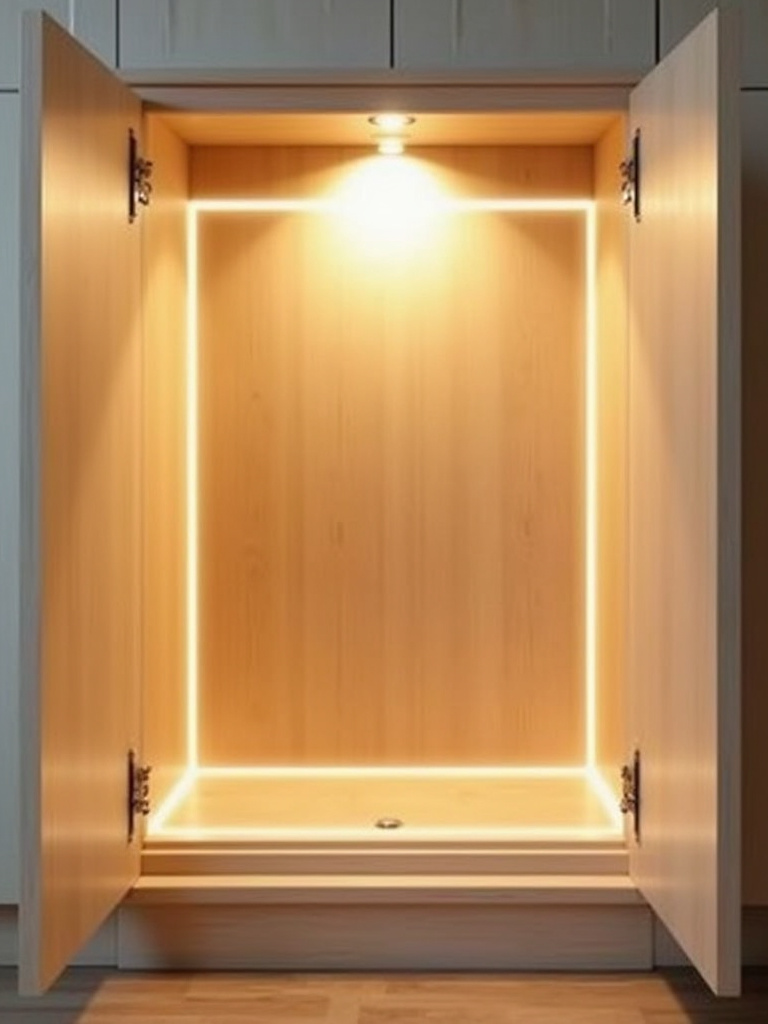
Instead, take the time to measure with care. Note not just the width and depth, but the unseen obstacles within—the pipes, the supports. These are not annoyances; they are part of the reality of the structure. A sink that is chosen in harmony with its cabinet feels settled and correct. It requires no struggle to install. It simply belongs.
When the container and the contained are in balance, the result is a quiet strength that resonates through the kitchen.
3. Determine Your Ideal Bowl Configuration (Single vs. Double)
Here we find a profound philosophical choice. A large, single basin is an expression of ma—the concept of negative space, of potent emptiness. It offers an uncluttered expanse, a quiet void ready to accept any task, no matter how large. Washing a great pot or a collection of garden vegetables becomes a simple, focused act. There is a deep tranquility in this uninterrupted form. It asks for nothing; it simply provides space.
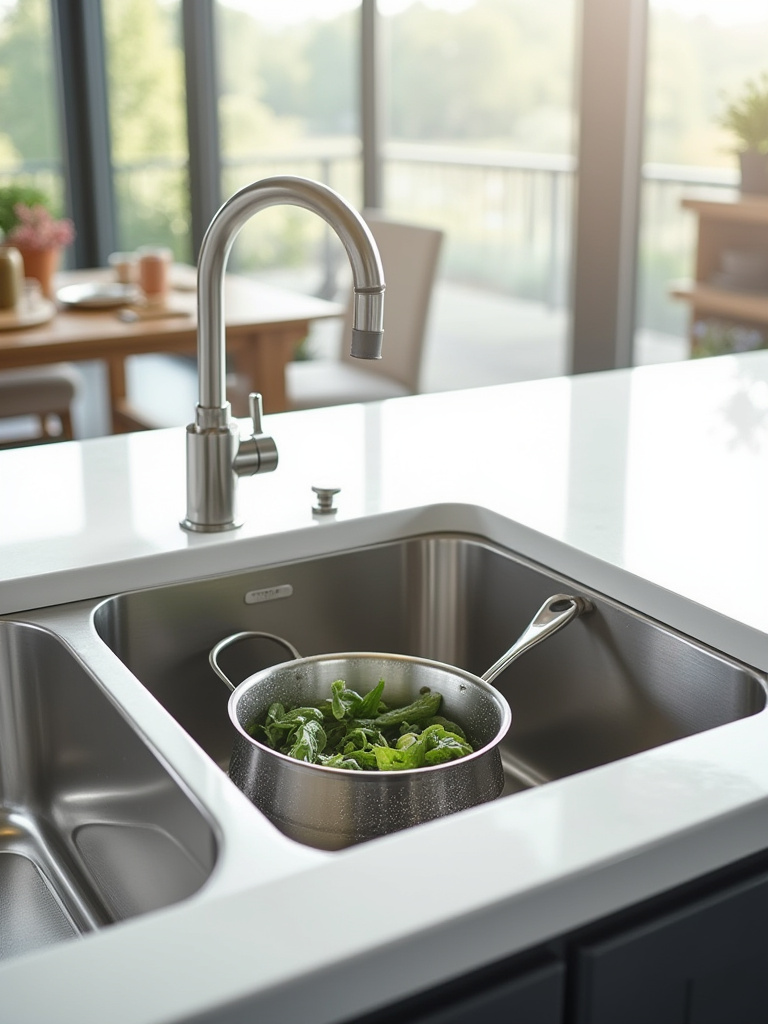
A double bowl, in contrast, creates division. It is an act of deliberate organization, separating the clean from the unclean, the soaking from the rinsing. For some, this structure brings its own kind of peace by imposing order on chaos. It is a more rigid approach, but for a busy mind, this separation can be calming. The question is not which is better, but which path leads to a quieter mind for you. Do you find calm in emptiness, or in order?
Answering this question honestly will tell you more about what you need from your space than any showroom display ever could.
4. Prioritize Material Durability for Long-Term Value
In the West, there is an obsession with the new, the flawless, the untouched. But the philosophy of wabi-sabi teaches us to find beauty in imperfection and to cherish the marks of time. The material of your sink should not be chosen for its ability to resist life, but for its capacity to age with grace. A stainless steel sink that acquires a soft patina of tiny scratches tells the story of a decade of meals. The heavy, resonant feel of enameled cast iron offers a sense of permanence and history.
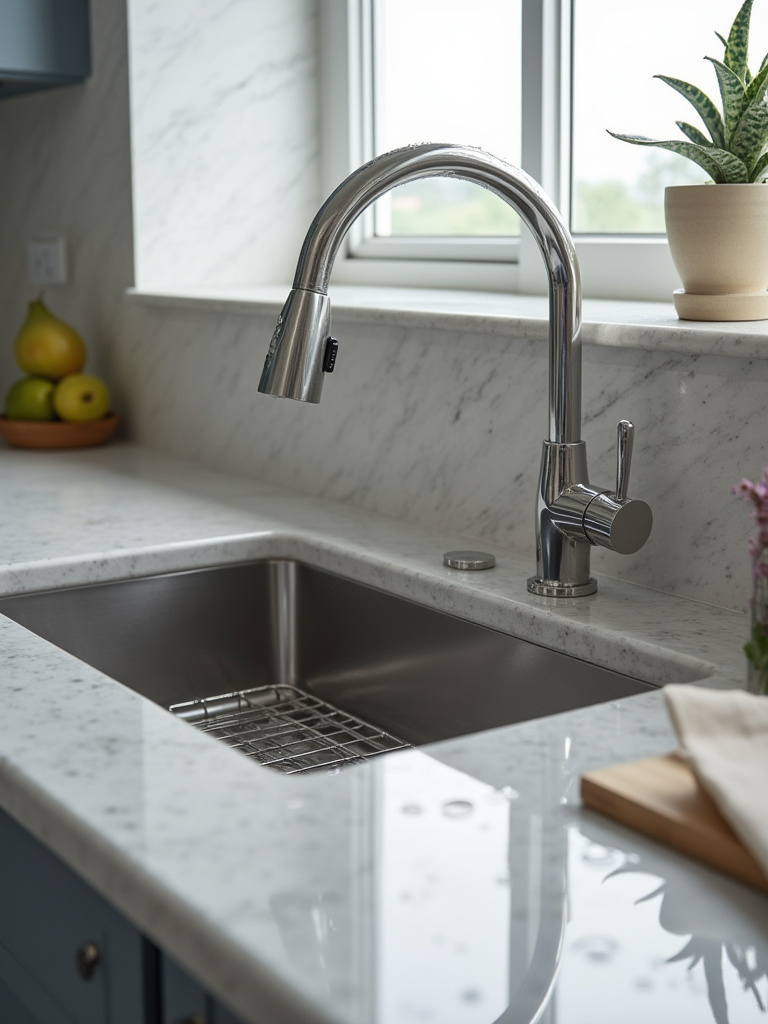
Look for materials that are honest and strong, that feel good to the touch and can withstand the rigors of daily use without complaint. The value is not in a low price, but in how an object will serve you over a lifetime. Choosing a durable, noble material is an act of respect for your future self and for the resources of the earth. It is a commitment to quality over fleeting trends.
A sink that grows with you becomes a quiet, trusted friend in your home.
Strategic Planning for Your Perfect Sink (Part 2)
As we move from the philosophical to the practical, our focus remains the same: to make choices that cultivate harmony. This next stage is about translating our intentions into the physical world—balancing our desires with the realities of budget and construction, always with the goal of creating a seamless and tranquil result.
5. Calculate Budget Allocation for Sink, Faucet, and Installation
To speak of money is not to be materialistic; it is to be realistic and respectful of our own resources. A budget is a container, much like the cabinet itself. It provides structure and allows us to make mindful decisions within a clear framework. Rather than seeing it as a limitation, see it as a guide that encourages creativity and focus. Allocate funds not just for the sink, but for the faucet and the hands that will install it.
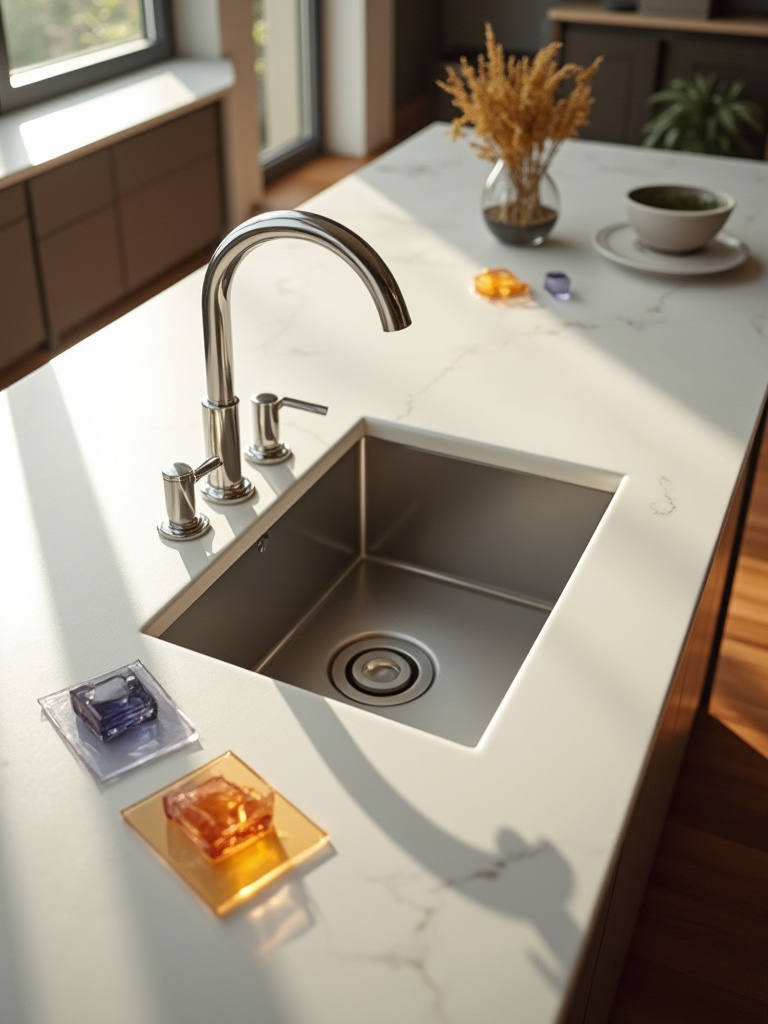
Each element is part of a whole. A beautiful sink with a cheap, flimsy faucet creates a feeling of imbalance. A quality installation, done with skill and precision, is an investment in future peace, ensuring there are no leaks or problems to disrupt the calm of your home. To budget thoughtfully is to honor the entire process, from the object itself to the unseen work that makes it functional.
This considered approach ensures the final result feels complete and harmonious, without the lingering stress of financial overreach.
6. Integrate Undermount or Drop-in Styles with Countertop Choice
The way a sink meets the counter is a crucial detail that speaks volumes about the design’s intention. An undermount sink creates a seamless transition, allowing the stone or wood of the countertop to flow directly to the edge of the water. This is an expression of shibui—a quiet, unobtrusive beauty. It simplifies the act of cleaning, as crumbs can be wiped directly into the basin. There is no visual interruption, which brings a profound sense of calm to the eye.
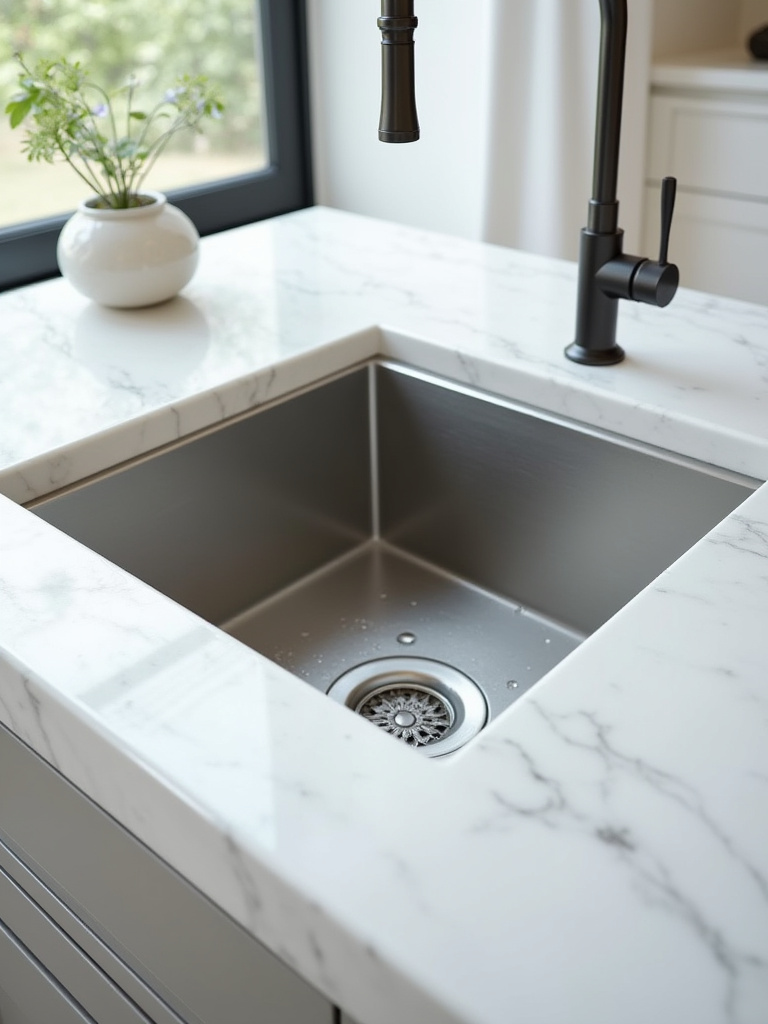
A drop-in sink, with its visible rim, makes a more deliberate statement. It clearly defines the boundary between water and land, between the wet zone and the dry. While some may see this as visual clutter, for certain materials like laminate, it is a practical necessity. In a rustic or traditional kitchen, this defined edge can feel grounding and intentional. The choice depends on your countertop material and the visual story you wish to tell.
Do you desire a seamless flow, or a clearly defined space? The answer lies in the feeling you wish to cultivate.
Smart Selection and Installation Strategies (Part 1)
With our foundation established, we now turn to the finer details that transform a functional object into an experience. These are not mere features, but subtle refinements that can elevate the daily ritual of working at the sink. Each choice here is an opportunity to enhance comfort, simplify motion, and create a space that feels deeply personal and supportive.
7. Select Sink Depth for Practicality and Splash Reduction
The depth of your sink relates directly to the posture of your body and the gesture of washing. It is a question of ergonomics, of balance. A sink that is too shallow will send water splashing outward, creating a constant need to wipe and clean, disrupting the calm of the surrounding space. It is an expression of imbalance.
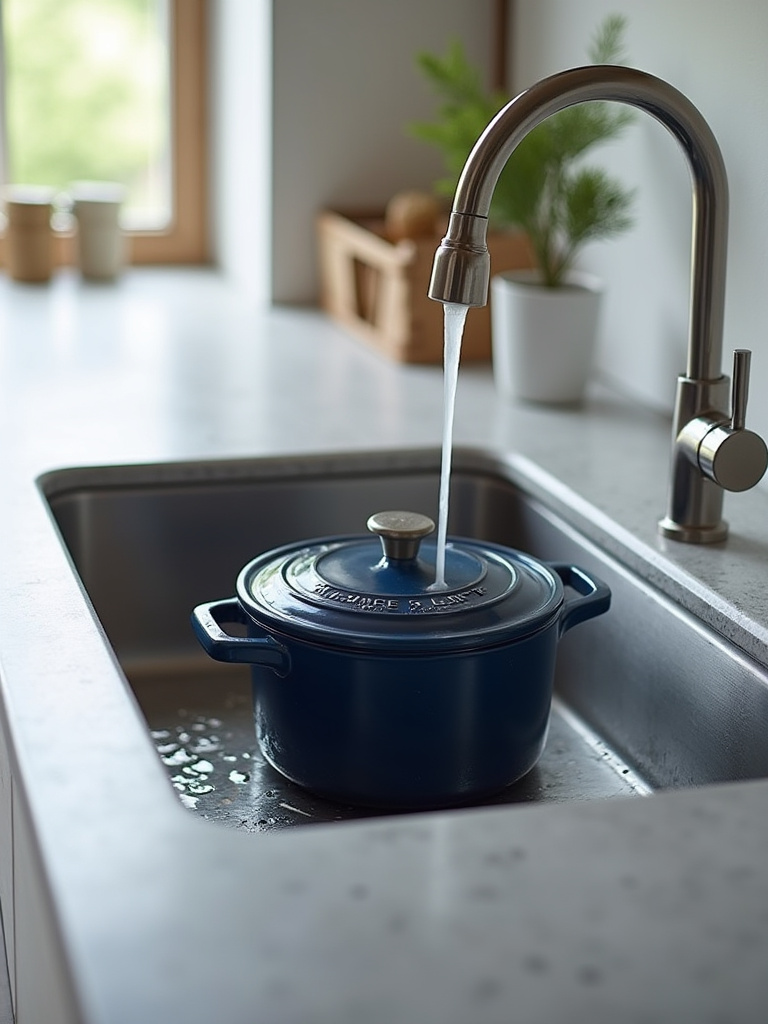
A sink that is too deep, however, can cause you to stoop, placing a subtle but persistent strain on your back. The ideal depth is one that contains the water with grace while allowing you to work with a relaxed, upright posture. It should be deep enough to hold your largest pot without feeling like you are reaching into a cavern. It is a quiet dialogue between the vessel and your body.
Finding this perfect balance is a small but meaningful way to bring physical comfort and harmony into your daily rituals.
8. Explore Apron-Front vs. Standard Sinks for Visual Impact
A sink does not have to be quiet and retiring. Sometimes, its purpose is to be an anchor, a strong and calming presence in the room. An apron-front, or farmhouse, sink does exactly this. Its forward-facing panel gives it a sense of substance and permanence. It feels grounded, traditional, and welcoming. It has a strong personality and becomes a gentle focal point for the entire kitchen.
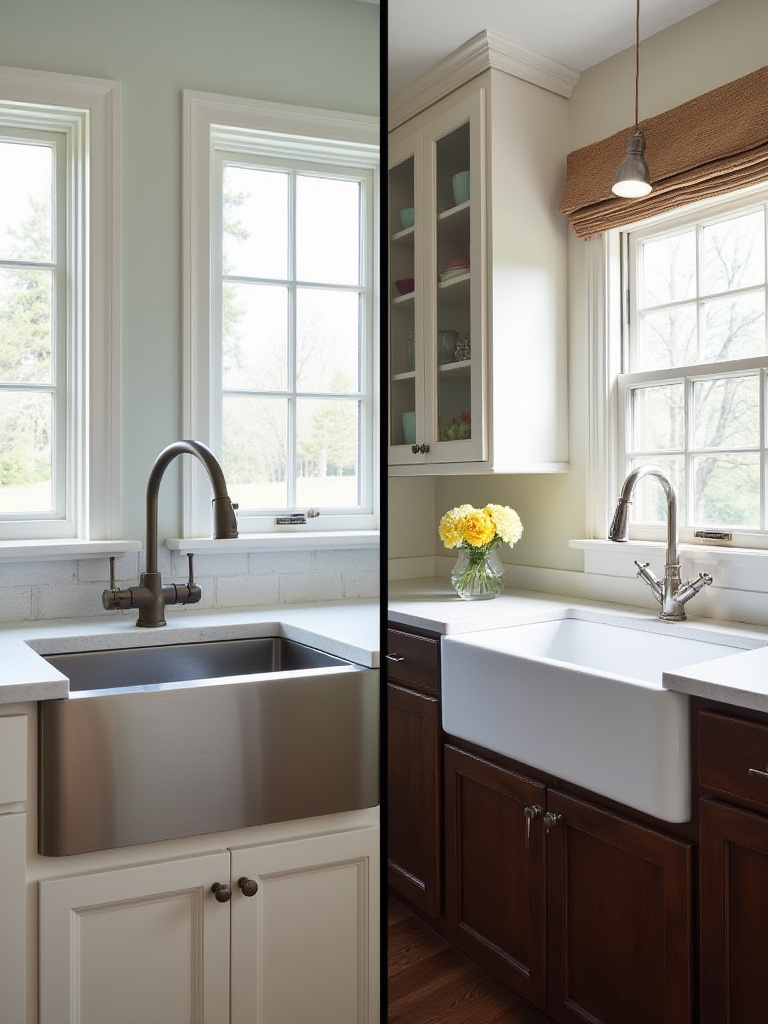
A standard undermount sink, by contrast, chooses to disappear. Its beauty lies in its near-invisibility, allowing the countertop and cabinetry to take center stage. This creates a more modern, minimalist feeling where the focus is on the clean, unbroken lines of the space. Neither is superior; they are simply different expressions. One is a bold statement of presence, the other a quiet study in absence.
Consider the energy of your kitchen. Does it need a grounding force, or does it crave the serenity of an uncluttered surface?
9. Consider Built-in Features Like Drying Racks and Ledges
In a small space, functionality cannot be an afterthought; it must be woven into the very fabric of the design. A “workstation” sink with integrated ledges is a masterful example of this. It does not add clutter; it transforms a single area into a multi-functional space for preparation, washing, and drying. A sliding cutting board and a fitted colander are not extra objects, but tools that appear when needed and vanish when their purpose is served.
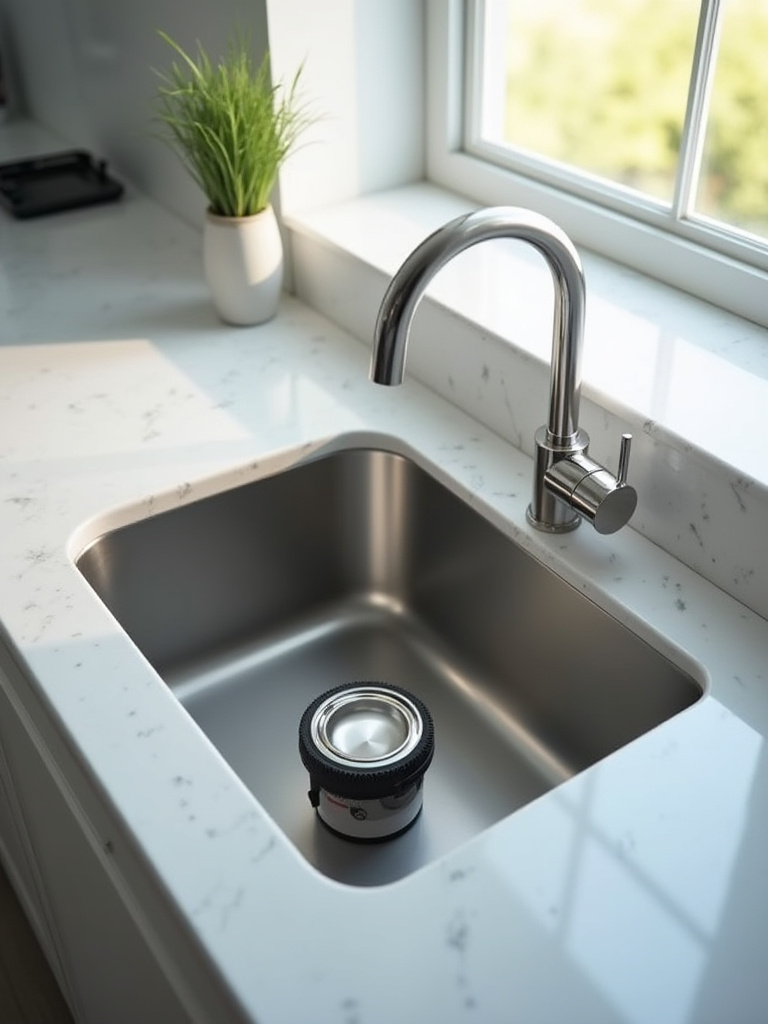
This is the essence of elegant design: maximizing utility while minimizing visual noise. These built-in features create a focused, self-contained zone where everything you need is within reach. This concentration of activity prevents mess from spreading across your counters and allows for a more fluid, efficient workflow. It is a small universe of purpose, contained within the sink’s borders.
True minimalism is not about owning nothing; it is about owning only that which is both beautiful and deeply useful.
10. Choose a Faucet Style That Enhances Ergonomics and Aesthetics
The faucet is the most tactile part of the sink experience. It is the tool your hand reaches for countless times a day. Its shape, weight, and the way it moves should feel natural and effortless. A high, graceful arc allows space for filling tall vessels, while a pull-down sprayer extends your reach with fluid precision. The form should please the eye, but the function must serve the hand.
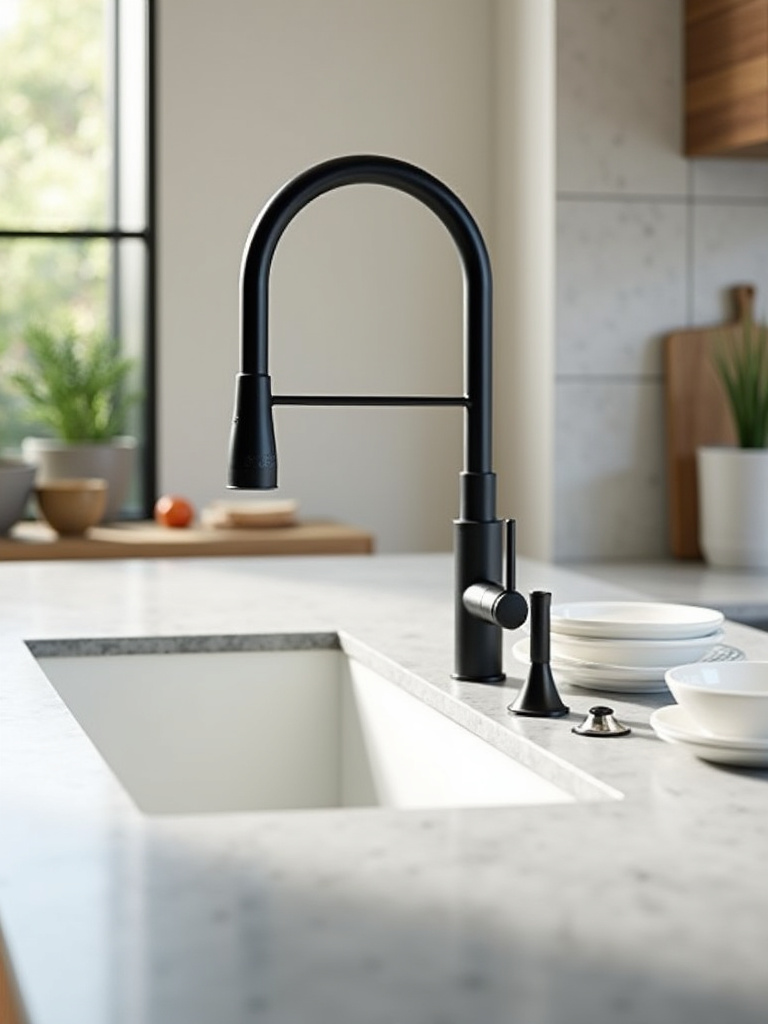
The finish of the faucet should harmonize with the other elements in the kitchen—the cabinet hardware, the lighting—creating a sense of quiet continuity. It should not shout for attention. Whether you choose a single elegant handle or the traditional comfort of two, the operation should be smooth and intuitive. The sound and feel of the water flowing from it become part of the kitchen’s soundscape.
Think of the faucet as a calligraphy brush. Its form should be elegant, and its purpose is to deliver water with intention and grace.
Smart Selection and Installation Strategies (Part 2)
We now look to the elements that are often unseen but are critical to the peaceful operation of the space. A calm surface is only possible when the systems beneath are well-ordered and functioning flawlessly. These strategies are about creating a foundation of quiet reliability that supports the visible beauty of your kitchen.
11. Ensure Proper Drainage System Installation for Clog Prevention
The flow of water out of the sink is as important as the flow of water into it. A drain that is slow or blocked creates a feeling of stagnation and unease. The plumbing beneath your sink is like the root system of a tree—unseen, but essential for the health of what is visible. Proper installation, with the correct slope and a well-formed P-trap, is a silent promise of effortless function.
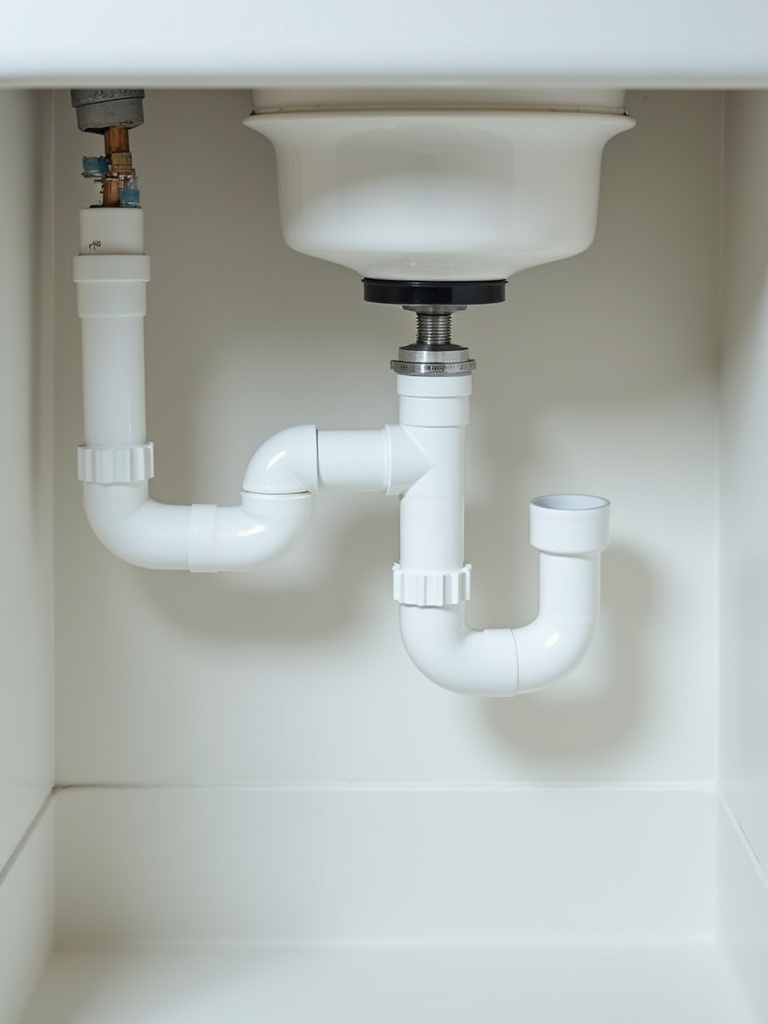
This is not an area for shortcuts. The work must be done with precision and care by a skilled hand. A properly installed drain prevents not only clogs but also the unwelcome odors that can disrupt the tranquility of a home. It ensures that what is no longer needed is carried away swiftly and silently, completing the cycle of use.
To invest in proper drainage is to invest in the unseen systems that create a foundation for lasting peace.
12. Opt for a Built-in Soap Dispenser for Decluttered Countertops
Every object placed on a countertop carries a visual weight. A plastic bottle of soap, with its bright label and temporary nature, adds a small but persistent note of visual static. It is clutter. By integrating a soap dispenser directly into the countertop or sink deck, you remove that distraction entirely. All that remains is a simple, elegant pump.
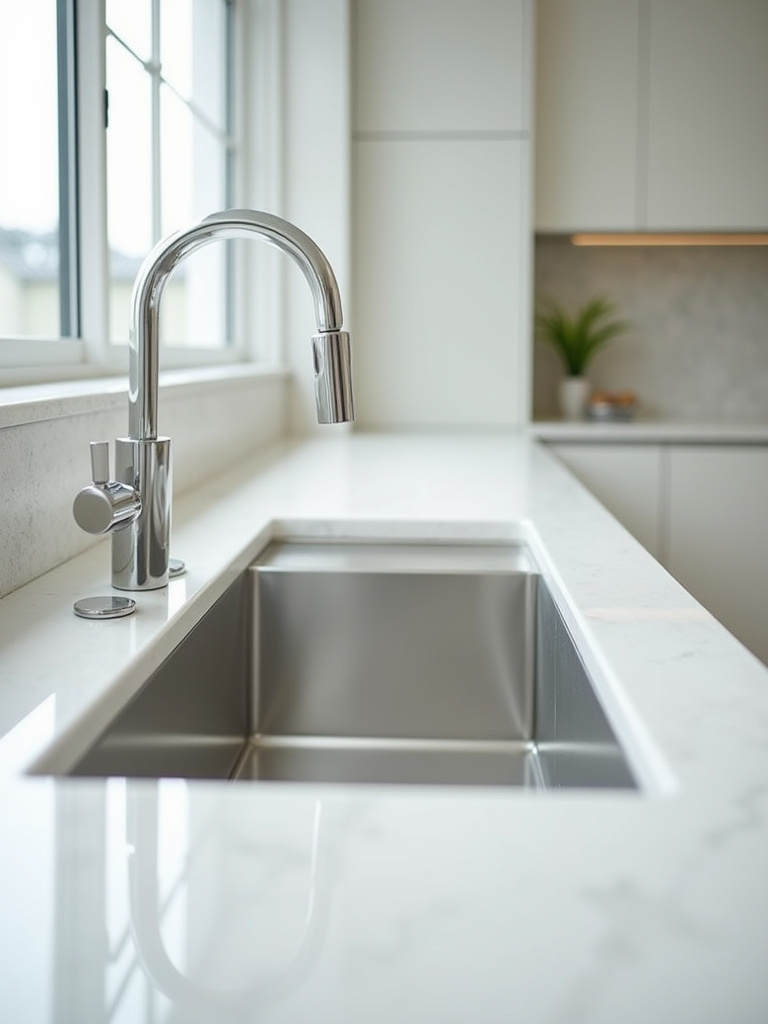
This small change has a disproportionately large impact on the feeling of the space. It is a commitment to removing the unnecessary, to simplifying the visual field so the mind can be at rest. The soap is still there, ready to serve its purpose, but its container has been integrated seamlessly into the architecture of the space.
This is the practice of minimalism: not removing function, but removing the visual noise that surrounds it.
Styling and Functionality Enhancements (Part 1)
With the essential form and function in place, we can now consider enhancements that bring a higher level of comfort and purpose to the sink area. These are not frivolous additions, but thoughtful layers that can transform a workspace into a truly pleasant and inspiring corner of your home.
13. Incorporate Smart Lighting Above the Sink for Better Visibility
Light is everything. It shapes our mood, it guides our hands, and it reveals the beauty in ordinary things. The area above your sink should be bathed in clean, clear light, free from the shadows cast by your own body. This is a matter of both safety and aesthetics. Good task lighting makes chopping vegetables or washing delicate dishes a more precise and pleasant activity.
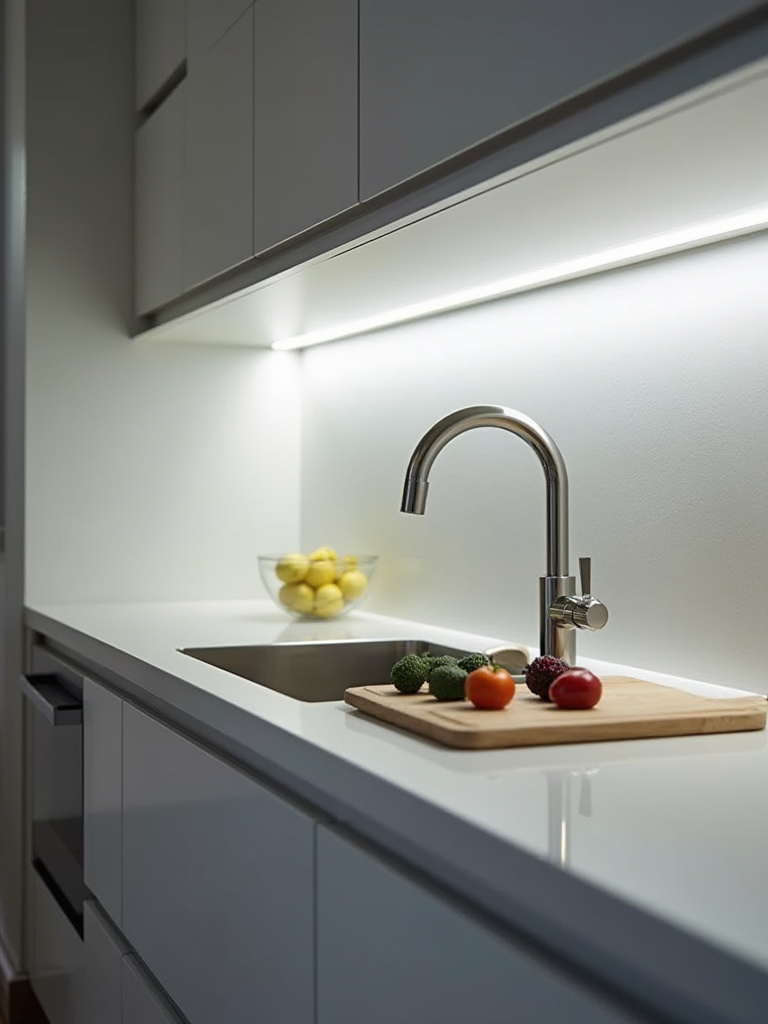
Modern lighting allows you to tune the quality of the light to the time of day or the task at hand—a bright, cool light for focused work, and a soft, warm glow for a quiet evening cleanup. The light should illuminate the work area without creating harsh glare. It transforms a simple utility zone into a beautifully lit stage for daily ritual.
Good lighting is a silent partner that makes every task easier and more enjoyable.
14. Add a Retractable Faucet Sprayer for Effortless Cleaning
A tool should serve its purpose and then gracefully retreat from sight. A retractable sprayer embodies this principle perfectly. When needed, it extends to provide a focused stream of water to every corner of the sink, making rinsing and cleaning an effortless, almost meditative task. Its flexibility gives you a sense of complete control.
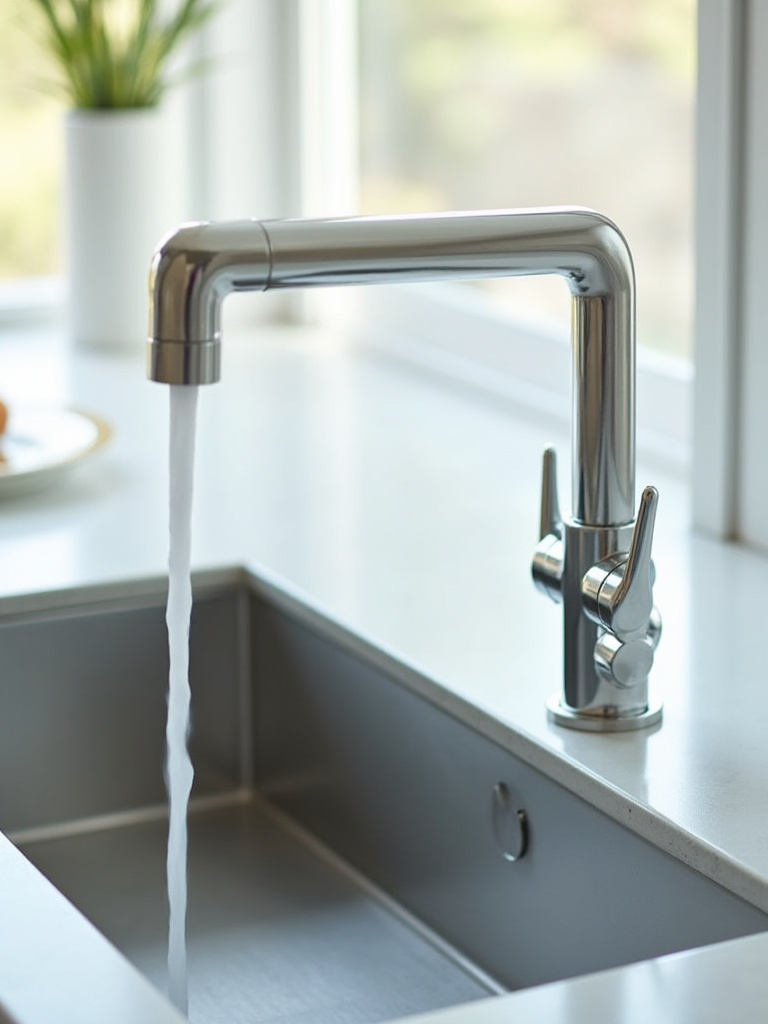
When the task is complete, it slides back into its dock, returning the faucet to its simple, uncluttered form. The mechanism should be smooth and reliable, with a gentle magnetic pull that guides it home. There is no awkward, dangling sprayer head to disrupt the clean lines of the fixture. It is function on demand, hidden within an elegant form.
This integration of utility and beauty is a hallmark of thoughtful design.
15. Utilize In-Sink Cutting Boards for Space-Saving Prep
In a kitchen where space is precious, every surface must be considered. An in-sink cutting board does not add another item to your kitchen; it transforms the sink itself into a preparation surface. By fitting perfectly over the basin, it creates a stable platform for chopping and allows food scraps to be swept directly into a compost bin or disposal below.
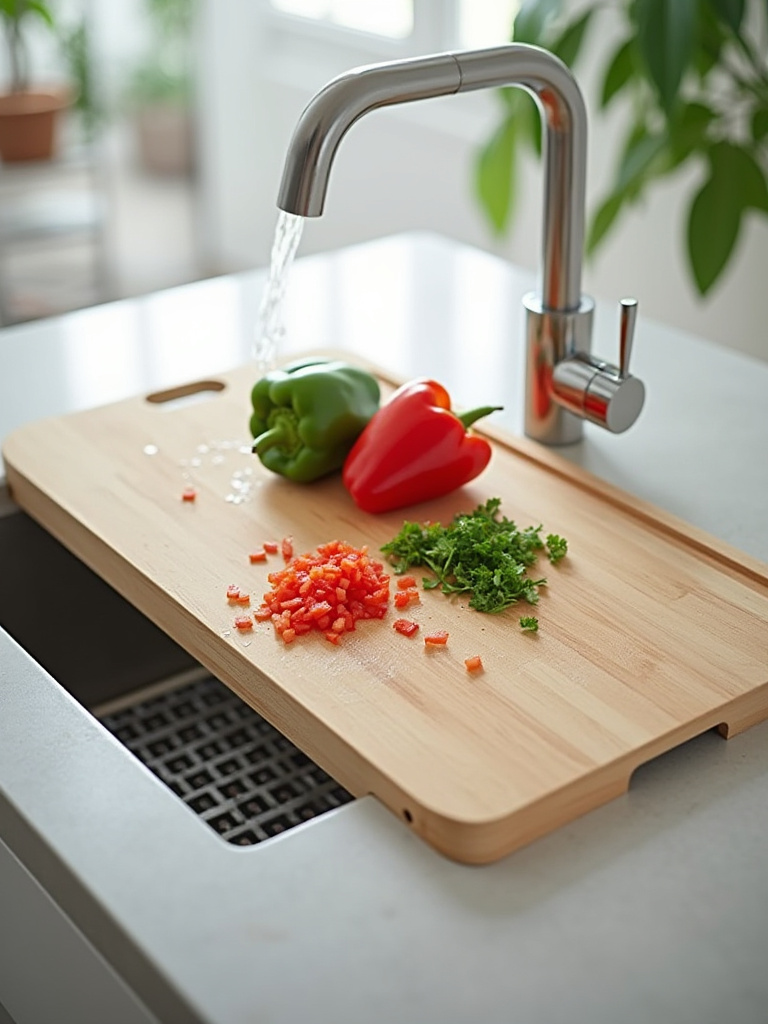
This clever integration contains the mess and streamlines the workflow. It is an act of efficiency born from a respect for space. The countertop remains clear for other tasks, creating a feeling of openness and calm even during the most complex meal preparations. The sink is no longer just for washing; it becomes an active partner in the creation of the meal.
This is how we make a small space feel generous and abundant—by giving each element more than one purpose.
16. Organize Under-Sink Storage with Pull-Out Bins and Shelves
The space beneath the sink is often a dark, chaotic place. But order in the unseen parts of our home contributes to a feeling of inner calm. Installing pull-out shelves transforms this awkward cabinet into an accessible and organized storage area. No longer must you kneel and rummage in the dark; the contents glide out into the light to meet you.
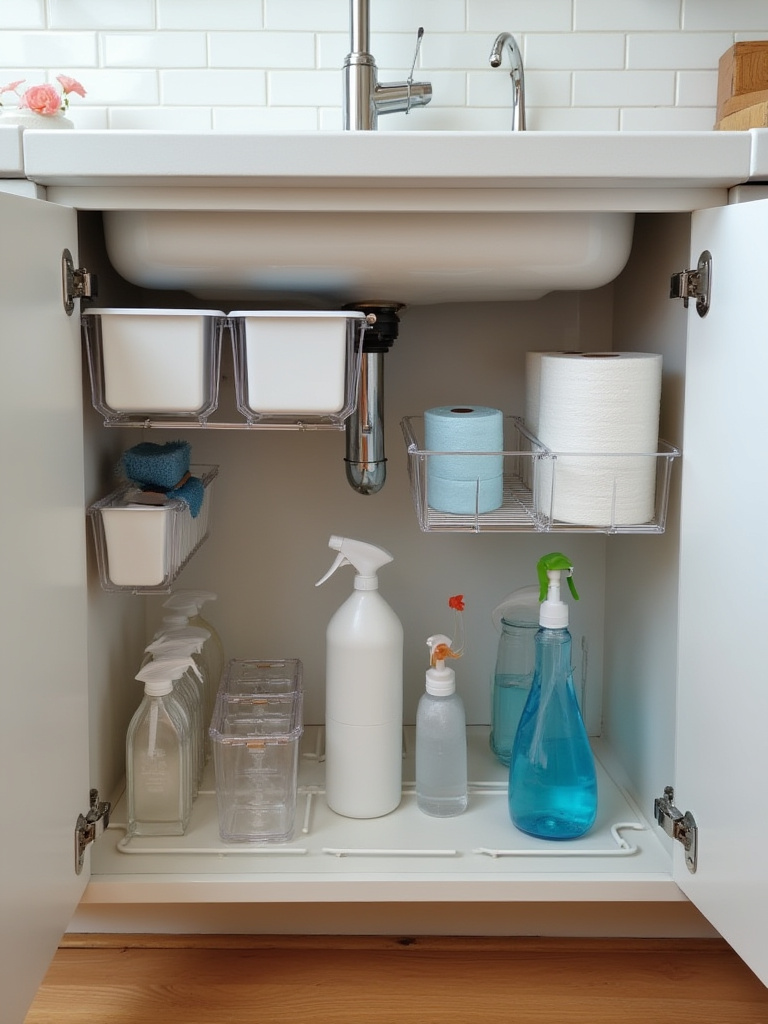
By giving every bottle, sponge, and towel a designated home, you bring a sense of intention and care to this hidden space. Grouping items by purpose creates a logical system that is easy to maintain. This act of ordering what is out of sight is a form of respect for your home and for your future self, who will be able to find what is needed without frustration.
A home that is well-ordered in its hidden corners feels peaceful to its very core.
Styling and Functionality Enhancements (Part 2)
We continue to refine the kitchen space, looking for ways to improve flow and enhance the sense of clean, mindful living. The final touches are often about simplifying the processes of daily life, removing small points of friction to create a more effortless and hygienic environment.
17. Install a Waste Disposal Unit for Quick Food Scraps Management
The cycle of preparing food and cleaning up should be a continuous, graceful loop. A waste disposal unit assists in this process by allowing food scraps to be dealt with immediately and hygienically. Instead of letting vegetable peelings and other organic matter linger in a bin, they are whisked away, preventing odors and keeping the kitchen space fresh and clean.
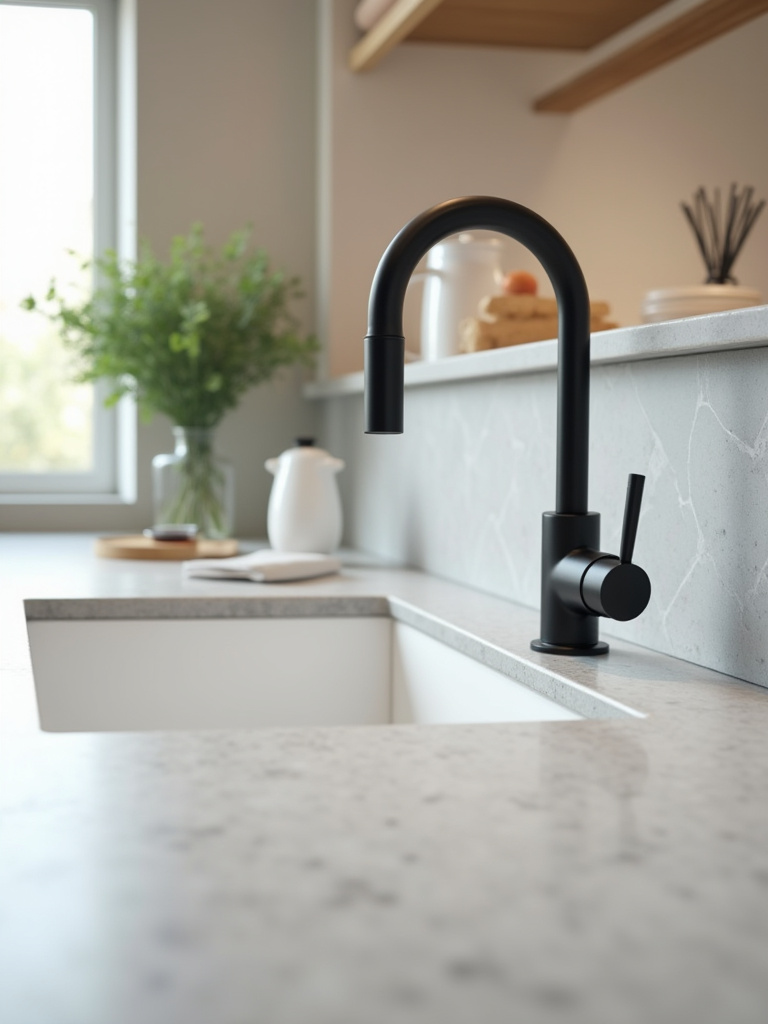
This is not about wastefulness, but about efficiency in returning food matter back to the system. It completes the task of food preparation cleanly, allowing you to move on to the next stage without the lingering presence of what is left over. When combined with mindful composting, it becomes part of a responsible system for managing your kitchen’s resources.
By simplifying the cleanup process, you are free to focus more fully on the joy of cooking and eating.
Optimizing Performance and Longevity (Part 1)
A truly harmonious home is one that functions as well as it looks. The following practices are about stewardship—the ongoing care and attention that ensure the systems in your home remain healthy and reliable. This is a meditative practice, a way of showing gratitude for the quiet work these objects do for us every day.
18. Implement a Water Filtration System for Healthier Drinking Water
Water is the source of life, and the water we bring into our homes should be as pure as possible. An integrated water filtration system provides this purity directly from the tap. It is a commitment to the health and well-being of your family, removing impurities that can affect both the taste of your water and your long-term health.
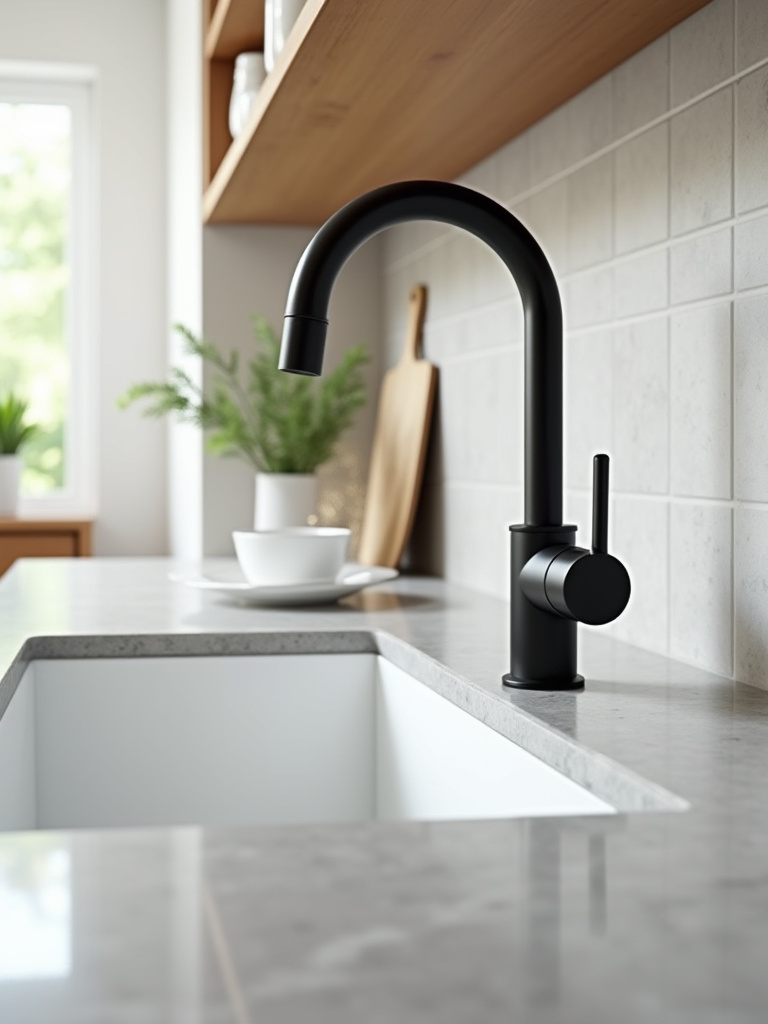
Having clean, delicious water on demand encourages us to drink more, to cook with better ingredients, and to make coffee and tea that tastes as it should. It also reduces our reliance on plastic bottles, which is an act of kindness to the planet. This single addition elevates the quality of everything that flows from your kitchen tap.
Purity in our water is a reflection of the clarity and mindfulness we seek to cultivate in our lives.
19. Protect Your Sink Base with Water-Resistant Liners
An act of foresight is an act of peace. Placing a water-resistant liner in the cabinet beneath your sink is a simple, protective gesture. It anticipates the possibility of a small leak or spill and provides a barrier to prevent water from damaging the wood of your cabinetry. This small, inexpensive measure can prevent great stress and expense in the future.
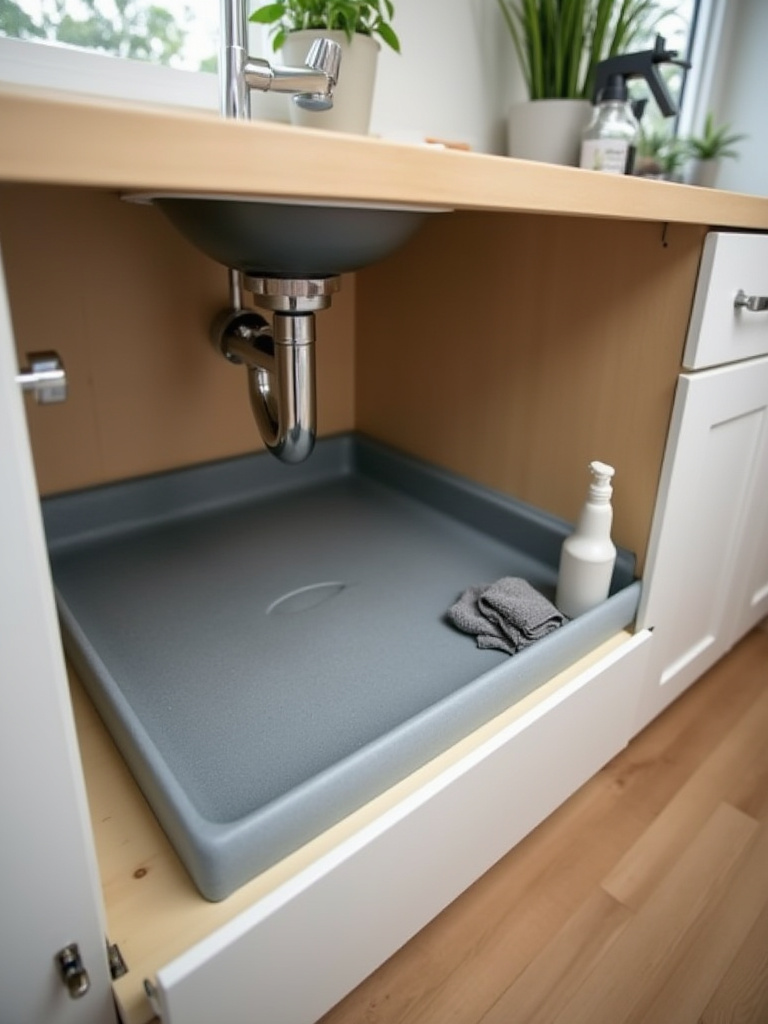
It creates a clean, smooth surface that is easy to wipe down and protects the structural integrity of your kitchen. Like all good preparation, it provides peace of mind. You know that this vulnerable area is shielded, allowing you to worry less about potential problems and focus more on enjoying your home.
This kind of quiet protection is a foundational element of a well-cared-for space.
20. Regularly Descale Faucets and Sprayers to Maintain Water Pressure
The slow, silent accumulation of mineral deposits in a faucet is a metaphor for how small neglects can lead to larger problems. Over time, this buildup can choke the flow of water, making the faucet less effective and frustrating to use. The ritual of descaling is a way of clearing this blockage and restoring the natural flow.
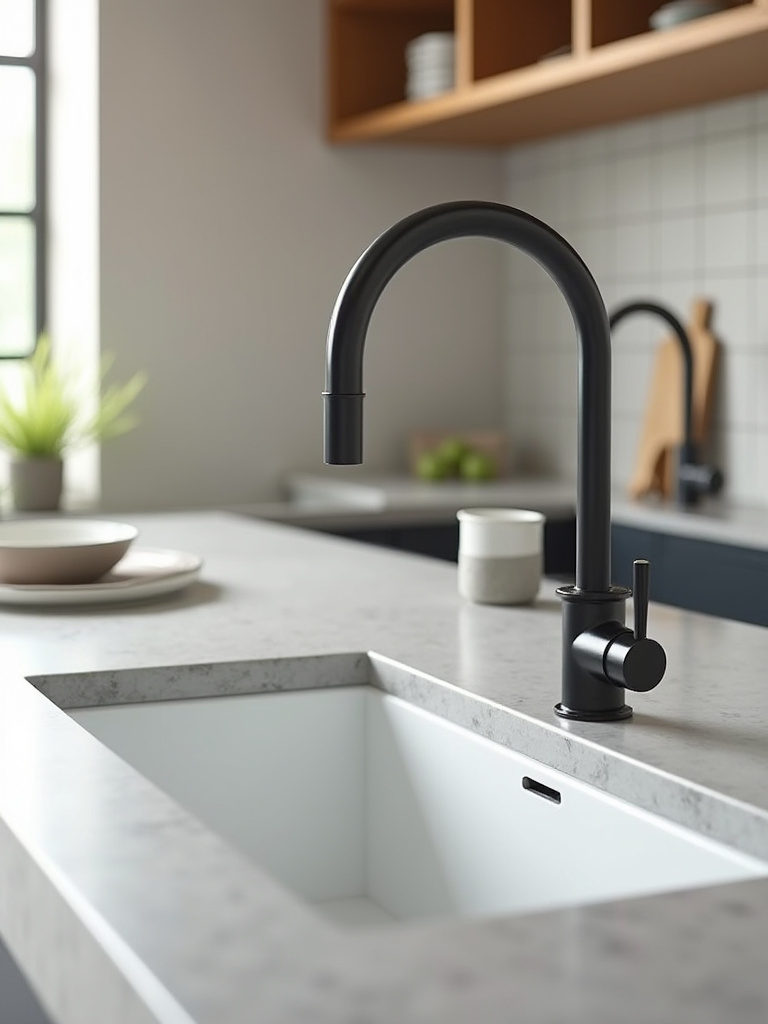
This simple act of maintenance, performed every few months, is a conversation with your home. It requires you to pay attention, to notice when things are not working as they should, and to take gentle action to correct them. Using a simple solution like white vinegar, you can dissolve the buildup and return the fixture to its original state of powerful, clean performance.
This is the practice of care: small, consistent actions that preserve the health and function of your home.
21. Adopt Daily Cleaning Habits to Prevent Stains and Build-Up
The most powerful tool for maintaining a beautiful home is not a chemical or a sponge, but a daily ritual. At the end of each day, the simple act of rinsing the sink, wiping it down with a soft cloth, and drying it completely is a form of meditation. It is a way of resetting the space, of leaving it clean and calm for the morning to come.
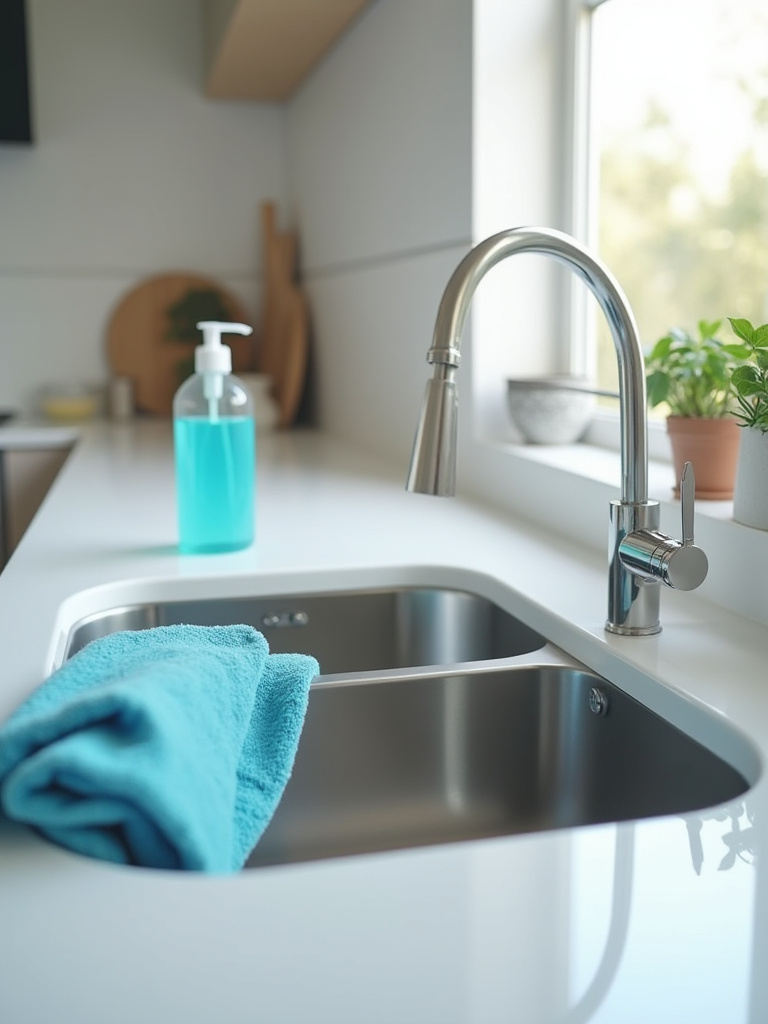
This habit, which takes only a minute, prevents the buildup of water spots and grime that requires harsh scrubbing later. It shows respect for the materials and keeps them looking their best. A dry, clean sink is a pool of tranquility in the heart of the kitchen. It is an invitation to begin the next day with a sense of peace and order.
In these small, daily rituals, we build a foundation of lasting harmony.
Optimizing Performance and Longevity (Part 2)
Our final consideration is one of partnership. We cannot maintain our homes in isolation. Recognizing when to call upon expertise is a sign of wisdom, and it is the ultimate way to ensure the long-term health of the complex systems that support our daily lives.
22. Schedule Annual Plumbing Checks to Prevent Major Issues
The plumbing of a home is like the circulatory system of the body—mostly unseen, but vital to its health. Just as we see a doctor for a check-up, it is wise to have a professional plumber inspect your system once a year. This is not a reaction to a problem, but a proactive measure to ensure everything is flowing as it should.
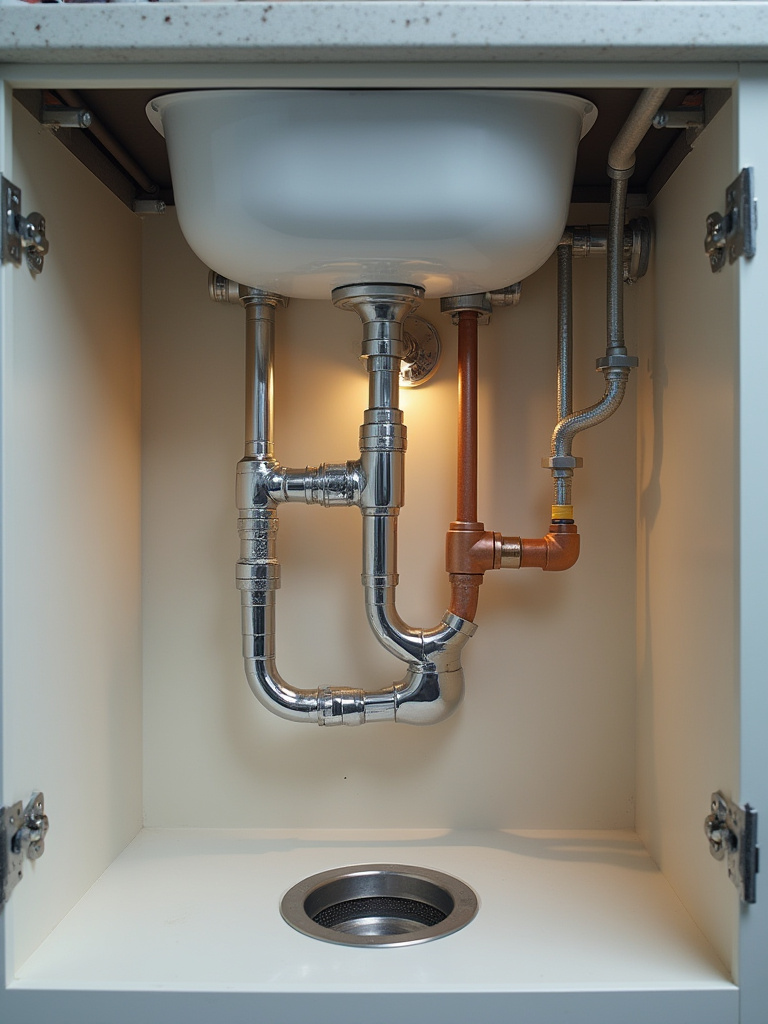
An expert can spot the subtle signs of wear or corrosion that an untrained eye would miss. They can identify a potential issue long before it becomes a catastrophic leak that disrupts your life and damages your home. This annual check-up is a small investment that protects the much larger investment you have made in your home. It is an act of responsible stewardship.
True peace of mind comes from knowing that both the seen and unseen aspects of your home are well-cared for.
Conclusion
You see now, the journey of choosing a kitchen sink is about much more than plumbing and materials. It is an opportunity to ask important questions: What brings me peace? What feels natural? How can I create a space that supports a calmer, more mindful way of life? The sink is not the destination, but a portal. By selecting it with intention, you are not just designing a kitchen; you are cultivating a sanctuary.
Let these ideas be a guide, but trust your own feelings. Stand in your kitchen and imagine the flow of movement, the quality of light, the feel of the faucet in your hand. The right choice will not be the one with the most features, but the one that feels most harmonious in your space and in your spirit. Let the heart of your kitchen be a place of quiet purpose and enduring beauty.
